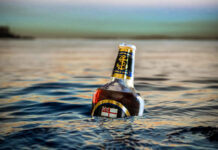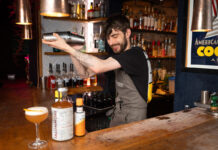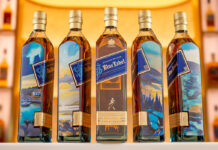
GROUND-breaking keg systems such as Dutch beer-in-a-bag invention Keykeg are said to be opening up new options for operators when it comes to ale.
Brewers say the format allows them to supply keg beers in smaller quantities and provide longer shelf lives for the product.
Sonny Priest of Valhalla Brewery in Shetland said the format is ideal for smaller operators.
“A huge benefit to the on-trade is innovative packaging like Keykegs which gives considerably longer shelf life,” said Priest.
“In its 30-litre form, which is the one we use, the unopened shelf life is nine months and once opened will keep for 30 days.
“This means smaller outlets can have a greater range of products on offer at the same time, as it equates to using one litre per day to get the Keykeg used by the end of its opened shelf life.”
The system is also said to be useful for operators in remote areas, who can sometimes receive fewer deliveries than those on the mainland.
But even in hard-to-reach areas, sales of craft in keg are said to be flourishing as hops become hip with a new generation of younger drinkers.
Another Shetland supplier, Jill Franklin of Lerwick Brewery, said the growing demand for craft beer has increased orders throughout Scotland.
“The ale market in Scotland is clearly on the rise – the craft beer movement has had a real impetus here, in the same way that the real ale movement did in England a few years ago,” she said.
“The market is a lot more vibrant and in some ways more open minded than it used to be.
“Customers aren’t so much demanding more choice as expecting it.”
And the sector is said to be helping to grow the beer category overall.
“Craft ale is definitely helping expansion of the market,” said Andrew Barnett of Barney’s Beer in Edinburgh.
“It’s offering a credible alternative to premium lager.
“It has provenance, it is well made and there is some great branding.”
And craft in keg needn’t be an alternative to traditional cask ale, said Barnett.
“Keg and cask can do different jobs and are therefore complementary,” he said.
“There was a time when kegged ale was trying to be an imitation of cask beer.
“Keg beer has merits of its own now.
“Barney’s Volcano IPA is available in both formats.”
Customers want to sample something different, with a bit of taste and character.
In fact, publicans were actively encouraged to consider stocking a variety of different types of beer.
Steve Stewart of Stewart Brewing said that by stocking keg, cask and bottled formats publicans “can decipher exactly what will sell and cater for various beer drinking populations”.
Attracting new drinkers to the category is important and some brewers, such as Skye Brewing Co, are specifically targeting their products at a younger market.
“What we’re finding is that customers are wanting to sample something different, getting away from the more standard lagers and beers; they’re looking for something with a bit of taste and character to it,” said the brewery’s Kenny Webster.
And there are several steps licensees can take to help grow interest in the category among staff and customers, according to Paul Miller of St Andrews-based Eden Brewery.
“A good example is offering taster ‘flights’ with three 1/3 pint samples, which offer choice and a heightened consumer experience,” said Miller.
“Meet the brewer events, if properly promoted and run, can be very effective. Staff visits to local breweries or supplier breweries can increase product knowledge and engagement.”
Gerald Michaluk, owner of Arran Brewery – which produces ales in craft in keg and cask formats – added that introducing guest craft beers on a rotational basis can be an effective way of expanding an outlet’s craft range and trialling new products.
He argued that market-leading craft brands “are a must on the permanent hand pull or font”.
“Then rotate a guest ale,” said Michaluk.
“If the offer is craft-based keg then rotate them like you would your guest cask ale.”



















